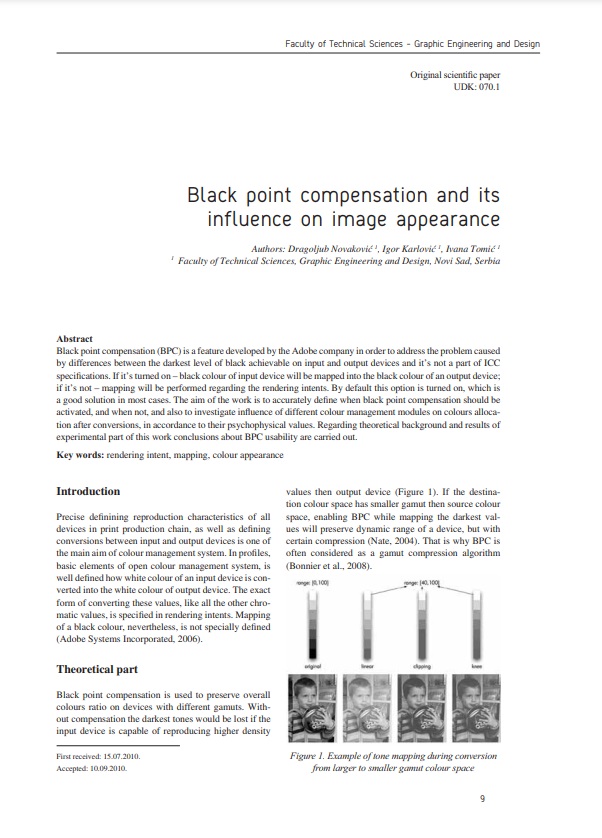
Published 2023-10-01
abstract views: 318 // Full text article (PDF): 205
Keywords
- rendering intent,
- mapping,
- colour appearance
How to Cite
Copyright (c) 2010 © 2010 Authors. Published by the University of Novi Sad, Faculty of Technical Sciences, Department of Graphic Engineering and Design. This article is an open access article distributed under the terms and conditions of the Creative Commons Attribution license 3.0 Serbia.

This work is licensed under a Creative Commons Attribution 3.0 Unported License.
Abstract
-
Black point compensation (BPC) is a feature developed by the Adobe company in order to address the problem caused by differences between the darkest level of black achievable on input and output devices and it’s not a part of ICC specifications. If it’s turned on – black colour of input device will be mapped into the black colour of an output device; if it’s not – mapping will be performed regarding the rendering intents. By default this option is turned on, which is a good solution in most cases. The aim of the work is to accurately define when black point compensation should be activated, and when not, and also to investigate influence of different colour management modules on colours allocation after conversions, in accordance to their psychophysical values. Regarding theoretical background and results of experimental part of this work conclusions about BPC usability are carried out.

